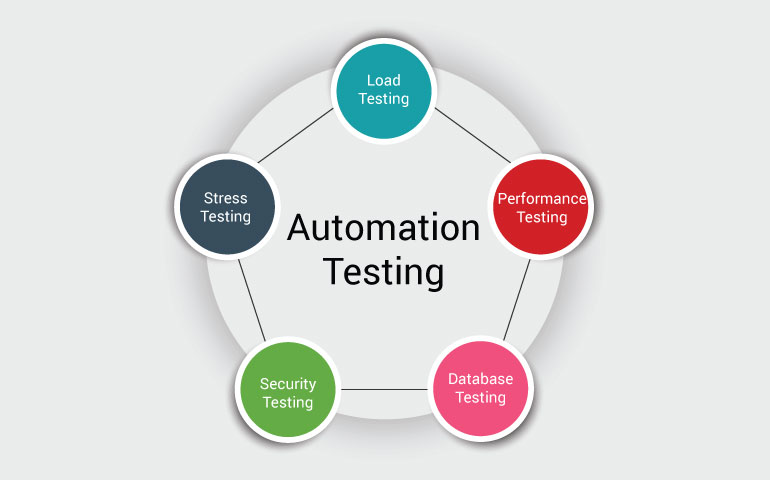From Guidebook to Automated Screening: A Comprehensive Overview to Transitioning Efficiently and Effectively
In the realm of software application screening, the change from handbook to automated processes has actually come to be an increasingly vital transition for organizations seeking to enhance effectiveness and precision in their screening techniques. As innovation proceeds to development, the demand for smooth and reliable automated testing methods has never ever been more important. The journey from handbook to automated testing is not without its obstacles, yet when come close to purposefully and with a clear strategy in mind, the benefits can be significant - automation testing. In this thorough overview, we will discover crucial actions and considerations necessary for a successful transition, from the preliminary selection of devices to the combination of automation into existing operations. Remain tuned to discover the insights that will certainly help lead the way for a smoother and much more effective screening process.
Advantages of Automated Evaluating
Automated screening supplies numerous advantages, improving effectiveness and precision in software program growth processes. Automated examinations can be run concurrently on multiple devices and operating systems, substantially speeding up the testing phase compared to manual screening.
Additionally, automated testing ensures a greater degree of accuracy in finding flaws. Consistency in screening is likewise improved, as automated examinations carry out the exact same steps specifically each time they are run.
Choosing the Right Devices

Firstly, assess your requirements and objectives. Recognize the scope of your task, the modern technologies entailed, and the ability of your group. This evaluation will assist you establish the capabilities and attributes you call for in your screening devices.
Second of all, consider the compatibility of the devices with your existing processes and systems. Seamless integration with your existing software program advancement lifecycle is necessary to make sure a smooth shift to automation.
Additionally, review the scalability and adaptability of the tools. As your testing requires progress, the tools need to have the ability to adapt and suit modifications efficiently.
Lastly, variable in the support and community around the devices. When executing automated screening, robust assistance and an active customer neighborhood can provide useful resources and help. By carefully taking into consideration these aspects, you can pick the right tools that straighten with your requirements and established the stage for a successful shift to automated screening.
Creating Effective Test Manuscripts

When crafting examination scripts, it is necessary to take into consideration the certain needs of the software program being evaluated and make certain that the scripts resolve all vital functionalities. Clear and detailed naming conventions for examination scripts and examination instances can enhance readability and maintainability. In addition, incorporating mistake handling mechanisms within the examination manuscripts can help in recognizing and dealing with concerns promptly.
Moreover, arranging test scripts right into modular parts can boost reusability and Read Full Report scalability, lowering redundancy and enhancing efficiency in examination manuscript upkeep. Regular testimonials and updates to examine manuscripts are essential to equal progressing software program requirements and performances. By adhering to these concepts, testers can develop efficient and durable examination manuscripts that contribute substantially to the success of automated screening procedures.
Integrating Automation Into Workflows
Efficient integration of automation tools into existing process boosts and simplifies procedures performance within software application growth cycles. When including automation right into operations, it is critical to recognize repetitive jobs that can be automated to conserve time and reduce human mistake. By flawlessly integrating automated screening devices like Selenium or Appium right into the software development lifecycle, groups can attain faster responses on code adjustments, bring about quicker pest discovery and resolution. This combination permits constant testing throughout the development process, ensuring that any issues are recognized beforehand, causing greater software application high quality. Additionally, automation can be made use of to cause examinations immediately after each code commit, providing prompt recognition and liberating testers to focus on even more facility situations. Proper integration of automation devices needs collaboration in between growth, screening, and operations groups to develop a unified process that optimizes efficiency and performance in supplying top notch software program items.
Guaranteeing a Smooth Change
Effectively transitioning to automated screening involves careful preparation and careful execution to decrease interruptions and make best use of performance in the software application advancement procedure - automation testing. To guarantee a smooth change, it is necessary to begin by conducting a thorough evaluation of the existing testing processes and recognizing areas where automation can bring one of the most significant benefits. Engaging with all stakeholders early in the procedure, consisting of designers, testers, and job managers, is important for amassing support and buy-in for the automation effort
Communication is essential throughout this shift stage. Clear interaction of the objectives, advantages, and assumptions of automated testing assists to handle any type of Learn More resistance or worries that might arise. Additionally, providing sufficient training and resources for team participants to upskill in automation devices and methods is crucial for making sure a successful shift.
Conclusion
To conclude, transitioning from manual to automated screening supplies various benefits, including boosted performance and integrity. By choosing the proper devices, composing reliable examination manuscripts, and incorporating automation flawlessly into workflows, organizations can guarantee a smooth and successful transition. It is vital to accept automation as a useful possession in software application screening processes to enhance overall quality and productivity.
In the world of software application screening, the shift from manual to automated processes has actually come to be a significantly essential shift for organizations seeking to boost performance and accuracy in their testing techniques. Automated examinations can be run concurrently on several devices and running systems, substantially speeding up the screening phase compared to hand-operated screening. Consistency in screening is likewise improved, as automated examinations carry out the exact same steps precisely each time they are run.To ensure the effective implementation of chosen screening devices, the production of effective examination scripts plays a critical function in verifying the functionality and efficiency of automated procedures - automation testing. By complying with these concepts, testers important source can produce efficient and durable test manuscripts that contribute significantly to the success of automated screening processes